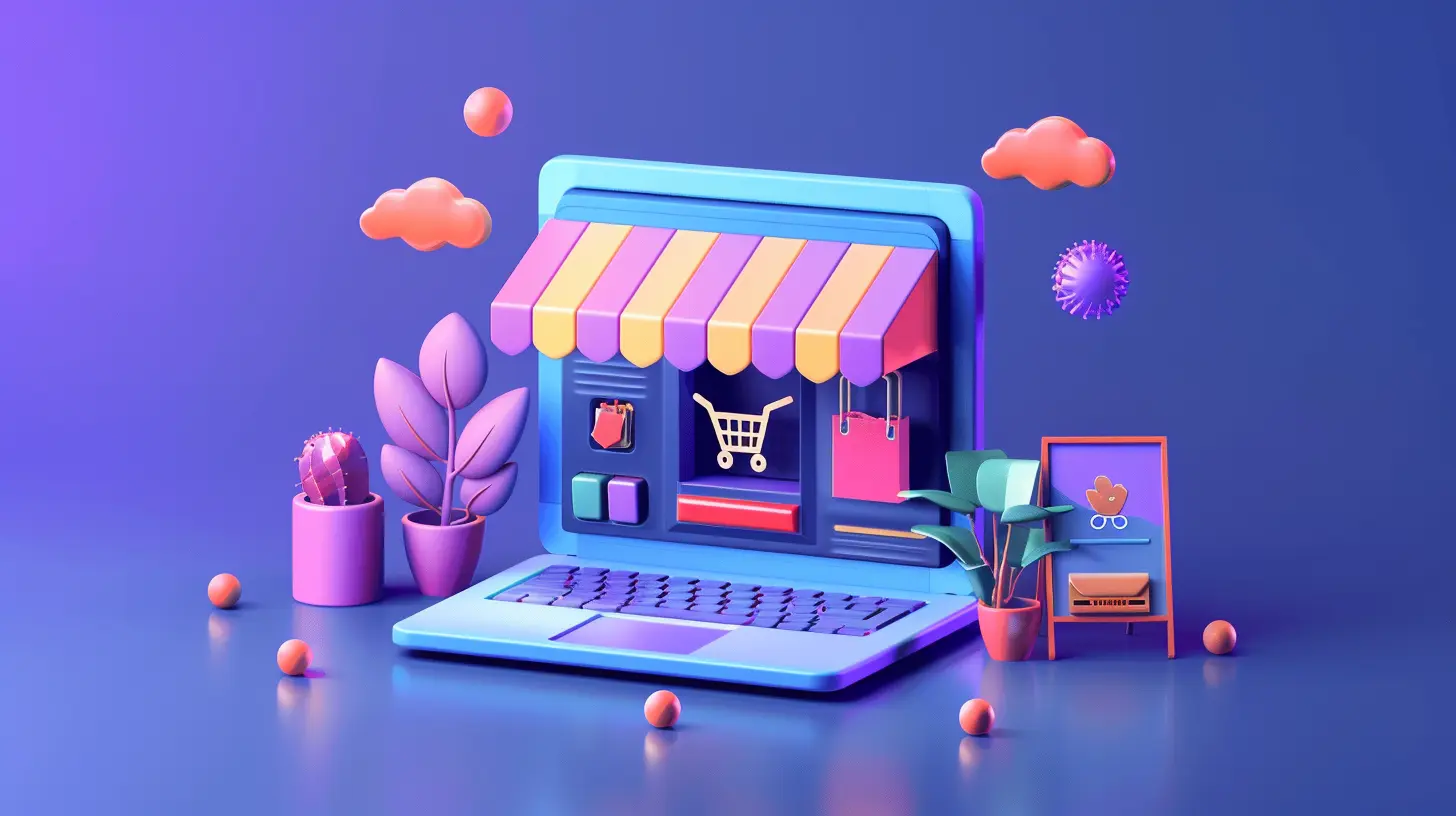Creating a Seamless Omnichannel Content Experience
30 September 2025
In today's hyper-connected digital world, consumers are everywhere—literally. They hop from social media to websites, from apps to emails, and even between in-store and online platforms. And guess what? They expect brands to keep up with them! This is where the idea of an omnichannel content experience comes in. It’s not just a buzzword; it's the secret sauce to creating meaningful customer interactions.
But wait—what exactly does a seamless omnichannel content experience even mean? How can your business pull it off without losing its mind (or budget)? Let’s break it all down, shall we? Stick around, because by the end of this article, you'll have a better handle on this concept than most brands out there.
What Is a Seamless Omnichannel Content Experience?
Okay, let’s get the basics straight first. Omnichannel simply means "all channels." But it’s not just about being present on every possible platform (though that’s important). It’s about creating a unified and consistent experience across all of them.Imagine this: You’re browsing a retailer’s website on your laptop, add something to your cart but don’t check out. Later, you get an email reminding you about the item, and when you open the app on your phone a week later—boom!—the cart is still there. That’s seamless omnichannel magic.
The content is aligned, the tone is consistent, and most importantly, the experience feels connected—like the brand knows you. There’s no “wait, where was I?” moment. That’s what customers expect these days, and delivering anything less can seriously hurt your business. 
Why Does Omnichannel Content Matter?
Let me ask you this: How often do you check just one platform before making a purchase? Probably never, right? Consumers move across devices and platforms like lightning, and they expect brands to keep up.Here’s why it matters:
- Customer Expectations: People want personalized, relevant, and streamlined experiences. If your brand feels disjointed or inconsistent, they’ll bounce faster than you can say “conversion rate.”
- Strong Brand Identity: Consistent messaging across channels strengthens your brand image. Think about how companies like Apple or Nike communicate—they’re always “on-brand,” no matter where you encounter them.
- Boosted Engagement: Omnichannel strategies can skyrocket engagement. Research shows that omnichannel customers spend more and have higher retention rates.
It’s like planting seeds in every possible field—if done right, you’ll reap a bountiful harvest of customer loyalty and revenue. 
Key Pillars of a Seamless Omnichannel Content Strategy
Building a seamless omnichannel experience isn’t something you can whip up overnight, but it’s totally achievable with the right foundation. Here’s what you need to focus on:1. Know Your Audience Like the Back of Your Hand
You can't serve content if you don't know who you're serving it to. Start by defining clear customer personas. These are detailed profiles of your ideal customers, including their preferences, pain points, and behaviors.Think of it this way: If your audience were a novel, your personas would be the CliffsNotes. They guide every decision you make, from tone and visuals to which platforms you prioritize.
2. Consistent Brand Voice Across All Channels
Imagine meeting someone who has completely different personalities depending on where you see them. Weird, right? That’s what an inconsistent brand voice feels like. Whether it’s Twitter, an email, or a blog post, your brand voice should be unmistakably you.Keep a content style guide handy to ensure your tone, terminology, and formatting remain consistent across platforms.
3. Leverage Data and Analytics
Here’s the thing: Guesswork won’t cut it. Use tools like Google Analytics, HubSpot, or social media insights to understand what content your audience interacts with most and on which platforms.Lean into your metrics. Are people dropping off after a certain email in your nurture sequence? Adjust it. Are Instagram posts performing better than Facebook? Double down on Insta. Data is your crystal ball—use it to predict and adapt.
4. Optimize for Mobile
This one’s a no-brainer. A huge chunk of your audience is interacting with your content on their phones, and there’s nothing more frustrating than clunky, unresponsive designs.Ensure every piece of content—your emails, blogs, social media graphics, and even checkout pages—is mobile-friendly. After all, if your content doesn’t work on-the-go, your customer may go to your competitor instead. 
Practical Tips to Create a Seamless Omnichannel Content Experience
Alright, now let’s get into the nitty-gritty. Here’s how to actually pull this off:1. Repurpose, Don’t Reinvent
Feeling overwhelmed by the idea of creating content for every platform? Don’t reinvent the wheel! Repurpose content instead.Got a killer blog post? Turn it into bite-sized Instagram carousels. Record a short video highlighting the key points for YouTube or TikTok. Use quotes for Twitter. One piece of content can go a LONG way with some creative tweaking.
2. Use Technology to Your Advantage
CRMs (like Salesforce) and marketing automation tools (like HubSpot or Mailchimp) can help create cohesive experiences across platforms. Whether it’s personalizing emails or automating retargeting ads, tech can be a major time-saver.3. Map Out the Customer Journey
Imagine your customer’s experience, from the moment they first hear about your brand to the point where they (hopefully) become loyal advocates. Map out their journey and identify where content can add value.- What questions might they have at each stage?
- Which platforms are they most likely to engage with at that time?
Your content should act like a tour guide—anticipating their needs every step of the way.
4. Test, Tweak, Repeat
Think of omnichannel content as a science experiment. Test different approaches, analyze the results, and refine your strategy continuously.It could be as simple as A/B testing email subject lines or running different ad creatives on Instagram vs. LinkedIn. Every insight you gain will bring you closer to perfection.
Common Pitfalls to Avoid
We all love a good success story, but let’s not ignore the potential landmines. Avoid these common mistakes:- Lack of Coherence: If your platforms feel disconnected, customers will notice. Every channel should complement the others—not compete.
- Ignoring Customer Feedback: Pay close attention to reviews, comments, and customer support inquiries. They’re goldmines of insight for improving your strategy.
- Overcomplicating Things: Simplicity wins. Don’t bombard users with unnecessary steps or redundant content.
The Bottom Line
Creating a seamless omnichannel content experience might seem like a Herculean task, but it’s absolutely worth it. When done right, it’s like conducting a well-rehearsed orchestra—the customer experience feels harmonious, intuitive, and delightful.Start small. Focus on understanding your audience, maintaining consistency, and leveraging data to inform your strategy. Before you know it, you’ll be crafting an omnichannel experience that makes your brand stand out in all the right ways.
So, what are you waiting for? Time to roll up your sleeves and start creating some magic!
all images in this post were generated using AI tools
Category:
Content MarketingAuthor:

Lily Pacheco
Discussion
rate this article
1 comments
Melody McKnight
Unify messaging, amplify customer journeys.
October 7, 2025 at 5:04 AM

Lily Pacheco
Absolutely! Unified messaging is key to enhancing customer journeys and ensuring a cohesive omnichannel experience.


